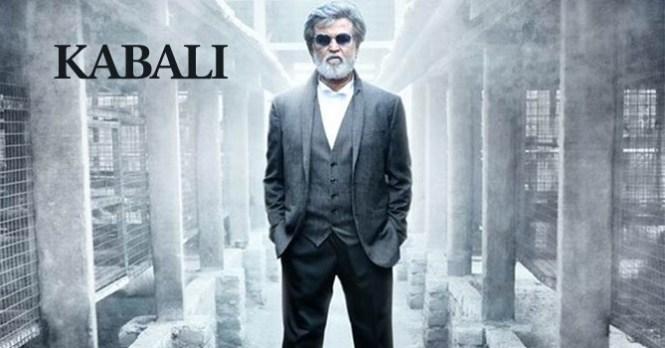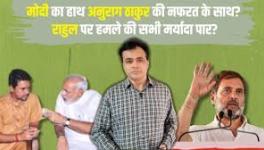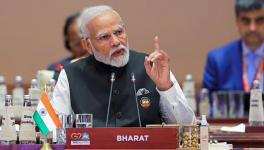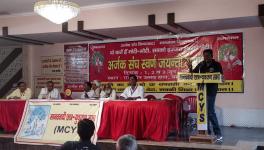Why Anti-Caste Movies Are Making Money

India is a deeply hierarchical society where caste continues to govern the morals and ethics of love-sex, the economy, entertainment, food habits and spirituality: as radical and persuasive as such statements sound, what also needs to be underscored are recent changes brought about by urbanism, education and the human instinct for progress.
Caste is changing in rural India and possibly even withering in some metropolitan spaces. Caste is no longer the only guiding force of Indian society. Ideas of equality are increasingly gaining performative ground. In other words, these ideas are changing our social reality. Such change may not always be drawn by free will and may also be a product of contemporary urban compulsions. However, this does not undermine the change itself.
We can witness these substantial changes in social and public life as people migrate, workers become mobile, villages reorganise and urban areas swell. There is a new autonomous Hindu subject who is for ‘equality’, but also more committed to his or her caste; who appreciates intercaste marriage but prefers to marry within caste; who is anti-caste without knowledge of anti-caste struggles. And we also have a progressive ‘pure’-Hindu who may tolerate meat—that is, allow others to eat meat—of all kinds except beef.
Despite the rising number of cases of caste violence against the former untouchables in India’s villages, newer accommodations that point to Hindu politeness are also underway. The former untouchables are being tolerated and accommodated beyond the traditional status accorded to them.
Beyond Hindu politeness, in cities we see signs of Hindu cosmopolitanism—a global Hindu who is rooted in his caste. Rahul Gandhi sporting and showing the janeu (sacred thread) could be considered an advanced form of such cosmopolitanism.
Changes in the public discourse on caste, especially the progressive turn it has taken, point to a newer economy of caste. We increasingly have a market for being anti-caste in this newer Hindu form void of strictures—a dynamic Hindu is in the making. As the art-space alters itself to cater to this emerging dynamic Hindu, we are bound to see even more engagement with caste among the newer urbane public. This set of people appreciates and is willing to spend money on performance and art that propagate equality. To ‘see’ anti-caste forms on-screen has become a source of satisfaction, for it provides the pleasure of progressivism, though from a distance. From being caste-blind, Bollywood and the television space has now moved on to create a series on Ambedkar’s life in Marathi, playing on Hotsar, a content-streaming service. This kind of series would have been unimaginable two decades ago.
The demand for anti-caste progressivism in art and cinema comes from multiple audiences: the elite base amongst English-speaking Hindu cosmopolitans, popular Bahujan (non-elite caste) masses who may aspire for equality but may not always struggle to achieve it, and popular nationalists who desire to be saviours (super-men) while retaining their caste pride and privilege.
Article 15, a recent Bollywood movie directed by Anubhav Sinha, catered to the last and first categories of such audiences successfully, by portraying a Brahmin protagonist struggling to provide justice for ex-untouchables. Made on a budget of Rs30 crore, Article 15 raked in Rs91 crore. Sairat, a low-budget Marathi language movie with deep anti-caste sensibilities made Rs110 crore.
The caste market in cinema is thus competitive and movies such as Kaala, Sairat, Kabali, Newton and Masaan offered more nuance while unravelling dominance and the symbolism of subaltern resistance. The well-known Tamil language film-maker Pa. Ranjith has also announced a movie on tribal freedom fighter Birsa Munda, marking the beginning of self-representation by Adivasis, too, in popular cinema. The depiction of self-assertion and valour in popular cinema may not remain limited to caste Hindu characters.
The new demand for and saleability of caste in the art and cinema industry is influencing the nature of art and the imagination that cinema produces. Following Partition, Bollywood invested its progressive energies heavily into the state-driven project of the communal (Hindu-Muslim) question and now we notice a demand-driven interest in the caste question. The presence of directors and artists such as Nagaraj Manjule, Niharika Singh, Neeraj Ghaywan and Pa. Ranjith have induced newer anti-caste civility in the realm of art and performance.
As caste-progressivism sells more, such performative progressivism will need to be assessed based on the challenges they pose to Hindu politeness and Hindu cosmopolitanism. Exploring the subtlety of caste privilege and oppression across public and private life will have a more critical role than dramatic reformism in art and cinema. We see glimmers of hope already, but a lot more remains to be desired and achieved.
Suryakant Waghmore is author of Civility against Caste and recently co-edited a special volume of South Asia on Democracy and Civility in India. His forthcoming book is Withering Caste and New Incivilities in Urban India.
Get the latest reports & analysis with people's perspective on Protests, movements & deep analytical videos, discussions of the current affairs in your Telegram app. Subscribe to NewsClick's Telegram channel & get Real-Time updates on stories, as they get published on our website.
























